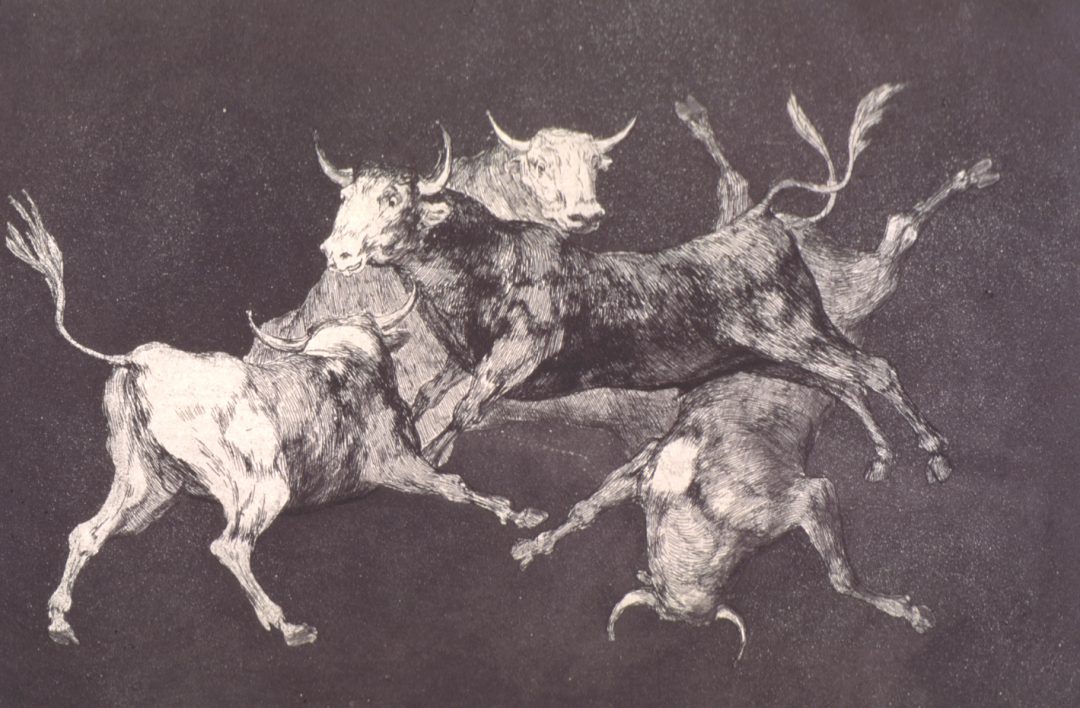Object of the Week: Foolish Extravagance
This etching by Francisco José Goya y Lucientes (1746-1828), titled Foolish Extravagance, is part of series titled Los Disparates (The Follies) from 1815/16–1823/24. Completed by an artist who lived through the oppressive Spanish Inquisition, among other sociopolitical events, each print from the series variously address themes of foolishness, misrepresentation, abuse of power, and fear.
Disparates was published posthumously in 1864 by The Royal Academy of San Fernando, from the 18 (of 22) plates in their possession. When The Royal Academy first produced this edition, they did so under the title Los Proverbios, sending scholars on a quest to match the prints with their respective proverbs. Later proofs by the artist—with handwritten titles beginning with the word “disparates”—shifted their meaning: these images were not illustrative of proverbs, but rather of follies. In the time since, the series has evaded clear interpretation, and “any promise of clear symbolic meaning that these things might offer is empty.”[1]
In Foolish Extravagance, four bulls twist, jerk, and careen one on top of another, seemingly free-falling against an amorphous black background. Offering little information, this black void heightens the sense of disorientation and absurdity that the image conveys. Lacking any rationalism that would be signaled by a horizon line, or other compositional cues, this and other etchings from Los Disparates evidence an absence of reason and coherent meaning.
– Elisabeth Smith, SAM Collection & Provenance Associate
